-
Posts
12444 -
Joined
-
Last visited
-
Days Won
554
Content Type
Profiles
Forums
Events
Everything posted by Fiery
-

FanSpeeds&ThermalSensors @Asus Crosshair Hero VI
Fiery replied to CottonEyedJoe's topic in Hardware monitoring
Measuring WATER_IN and WATER_OUT temperatures would require performing EC (Embedded Controller) bank switching, which is a dangerous thing to do on Asus motherboards, especially when AI Suite is installed. So AIDA64 stays away from measuring those temperatures. We will add the other 2 missing readings in the next AIDA64 beta update. I'll post a message into this topic once the new beta build is available for download -
We've done some experiments with the JS code you've provided, and it doesn't seem to work all that well with either Chrome or Safari. Disabling pinch-zoom and double-tap zoom makes it less usable and more quirky due to device width and actual pixel width resolution discrepancies. Not to mention the sad fact that Safari under iOS refuses to enter full-screen mode We need to brainstorm a bit more over this: it would be great if we could find an alternative way to request full-screen mode. As for page switching: RemoteSensor only supports automatic page rotation. What we usually recommend about similar requests is to simply choose a 2x preview width and/or 2x preview height, compared to the values you normally choose. That way you can define 2 or 4 pages easily, either next to each other or on top of each other, and on your mobile device you can use swiping gestures to navigate to the page you wish to monitor. BTW, this kind of usage scenario stops working if you need to fix the viewport parameters as per your request
- 2 replies
-
- javascript
- ios
-
(and 4 more)
Tagged with:
-
Yes, that's normal. Once you press OK on the Preferences window and open the Preferences again, the right order of pages with the right page index will be displayed. Or at least that's how it's supposed to work Please try it
-
I'm afraid I've run out of ideas on what to check
-
I'm really not sure what could cause in PrecisionX to make AIDA64 stop working. The next time you notice the loss of iCX-related sensor readings from the Sensor page, please create an updated nVIDIA SMBus Dump , so we can see what registers changed in what way from the normal state.
-

Gigabyte X299 Aorus Gaming 9 missing sensors
Fiery replied to gandalf's topic in Hardware monitoring
Thank you. I'm afraid we need to keep looking for the mysterious device that would provide the missing sensor readings... I'll let you know in this topic if we can find it. -
Thank you for the data. Please upgrade to the latest beta version of AIDA64 Extreme available at: https://www.aida64.com/downloads/latesta64xebeta After upgrading to this new version, make sure to restart Windows to finalize the upgrade. Let me know how it works
-

about the unit of Netspeed, better to add the option of "Mbps"
Fiery replied to zhuoziqiang's topic in Brainstorming
We've implemented it in the latest AIDA64 beta update available at: https://www.aida64.com/downloads/latesta64xebeta -
Please let me know what is the arrangement of the displays when it comes to Windows Desktop. Like are they connected horizontally, with the smaller display on the left? Or are they vertically connected with the smaller display on the top?
-
Thank you. It's rather odd, now it really should work. Can you please post an updated screen shot of the Computer / Sensor page of AIDA64?
-

alarm functionality and SMART for Raid0
Fiery replied to thuylinhphuong's topic in General Discussion
You're using a very old version of AIDA64. SMART information for RAID members of Intel RAID controllers is fully provided by AIDA64, but an old version may not support the latest RAID controllers. So it would be best if you could upgrade to the latest AIDA64 version of 5.92: https://www.aida64.com/downloads/latesta64ee -
No, it's more like some deep secret or issue in the "bowels" of Windows. It's definitely software related, but quite frankly, I have no idea what could cause it
-
You can simply enter the license once, on your main computer. AIDA64 will save (copy) the license into a file called PKEY.TXT that you can find in AIDA64 installation folder. Or the folder where you've started AIDA64.EXE from, in case you use a portable package. You can then take the PKEY.TXT file and distribute it along with the other files of AIDA64 in the same ZIP package.
-
The hardware failure in this particular case is most likely caused by an excessive RAM setting that makes the RAM modules generate CRC errors occasionally. If it were a lot worse, Windows would fail to boot up. Try to lower the RAM frequency a notch, like from DDR4-3000 to DDR4-2800, it should help.
-
Well, it all comes down to how Windows manages physical and logical drives internally. And drive re-scanning and potentially re-ordering as well can occur by a number of reasons, not just when you connect an external drive. It's very difficult to diagnose this issue, unless you are able to find out what triggers it to go wrong. Maybe when you connect an USB device, like a printer or headphones? Maybe occasionally you connect/disconnect a different kind of external drive, like a flash drive that you don't expect to be monitored?
-
Thank you. Does your Windows user have administrator privileges? Are you sure AIDA64 is properly installed, so it can load its kernel driver from its installation folder?
-
You can also log the readings using the Logging facility, or have a Min/Max/Average of the values collected by the AIDA64 System Stability Test.
-
In case the core frequency of the individual CPU cores fluctuate, then AIDA64 already has got per-core frequency monitoring items for OSD Panel, SensorPanel, etc.
-
That information merely means that the installed Windows edition supports that feature or not. If you remove the service, the Windows 7 Ultimate edition that you've got installed still supports it as a feature.
-

about the unit of Netspeed, better to add the option of "Mbps"
Fiery replied to zhuoziqiang's topic in Brainstorming
Try to switch to SensorPanel, where you can specify the measurement unit for the network download/upload rate items as Mbps to convert the readings automatically to Megabits per second. With SensorPanel you can also use MB/s as network download/upload rate measurement unit to convert the values to MegaBytes per second. -
We don't have a preferred method. Anything could work, as long as the bootable Windows platform includes WoW64.
-
I've sent you the download link in private message. Regards, Fiery
-
Is phantom throttle different to "classic" throttling of Intel processors, dating back to Pentium II ?
-
Thank you for your feedback. The workaround should work with RS4 Insider Preview Build 16353 as well
- 21 replies
-
- win10
- insider preview
-
(and 3 more)
Tagged with:

